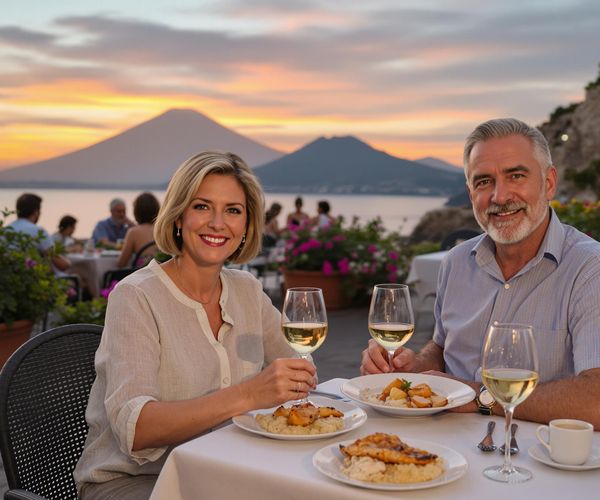
Herculaneum: An Ancient Civilization Preserved in Time
Discover Herculaneum: A well-preserved Roman town frozen in time, offering an intimate and detailed look at ancient daily life, architecture, and culture.
Nestled in the shadow of Mount Vesuvius, Herculaneum offers a unique glimpse into ancient Roman life. Unlike its more famous neighbor Pompeii, Herculaneum was preserved under a thick layer of volcanic mud, which has kept its buildings, mosaics, and even wooden structures remarkably intact. This gives visitors an unparalleled opportunity to walk through history, exploring homes, baths, and public spaces as they might have looked nearly 2,000 years ago. The streets of Herculaneum are lined with well-preserved shops, taverns, and homes, providing a fascinating look at daily life in a Roman town. Highlights include the luxurious House of the Deer, with its stunning frescoes and marble decorations, and the public baths, where you can see the intricate heating system used by the Romans. The city's forum and basilica are also must-see landmarks, offering insights into the social and political life of the time. Herculaneum is less crowded than Pompeii, giving visitors a more relaxed and intimate experience. The site is smaller and more manageable, making it ideal for a day trip. Whether you're a history buff or simply curious about ancient civilizations, Herculaneum is a captivating destination that brings the past to life in vivid detail.
Local tips in Herculaneum
- Wear comfortable shoes, as you'll be walking on ancient cobblestones and uneven surfaces.
- Visit early in the morning or late in the afternoon to avoid the midday heat and crowds.
- Bring water and snacks, as there are limited facilities within the archaeological site.
- Consider hiring a local guide to gain deeper insights into the history and significance of the ruins.
- Don't miss the small museum near the entrance, which houses artifacts found on the site.
Herculaneum: An Ancient Civilization Preserved in Time
Nestled in the shadow of Mount Vesuvius, Herculaneum offers a unique glimpse into ancient Roman life. Unlike its more famous neighbor Pompeii, Herculaneum was preserved under a thick layer of volcanic mud, which has kept its buildings, mosaics, and even wooden structures remarkably intact. This gives visitors an unparalleled opportunity to walk through history, exploring homes, baths, and public spaces as they might have looked nearly 2,000 years ago. The streets of Herculaneum are lined with well-preserved shops, taverns, and homes, providing a fascinating look at daily life in a Roman town. Highlights include the luxurious House of the Deer, with its stunning frescoes and marble decorations, and the public baths, where you can see the intricate heating system used by the Romans. The city's forum and basilica are also must-see landmarks, offering insights into the social and political life of the time. Herculaneum is less crowded than Pompeii, giving visitors a more relaxed and intimate experience. The site is smaller and more manageable, making it ideal for a day trip. Whether you're a history buff or simply curious about ancient civilizations, Herculaneum is a captivating destination that brings the past to life in vivid detail.
When is the best time to go to Herculaneum?
Iconic landmarks you can’t miss
Archaeological Park of Herculaneum
Discover the wonders of the Archaeological Park of Herculaneum, a hidden gem of Roman history, art, and culture near Naples, Italy.
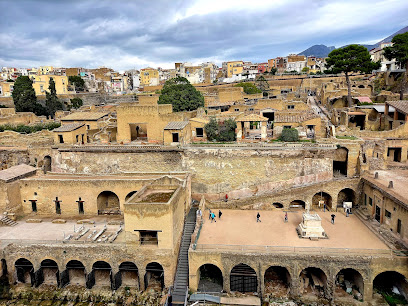
Herculaneum Hotel & Maison
Stay at Herculaneum Hotel & Maison for a blend of comfort, charm, and historical exploration in the heart of Ercolano, Italy.

MAV - Virtual Archaeological Museum
Explore the MAV - Virtual Archaeological Museum in Ercolano, where ancient history comes alive through cutting-edge technology and immersive exhibits.
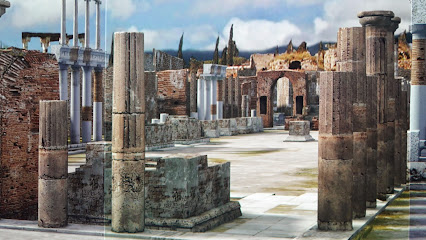
Basilica di Santa Croce
Explore the Basilica di Santa Croce, a stunning architectural gem in Torre del Greco, offering artistic treasures and serene spiritual ambiance.
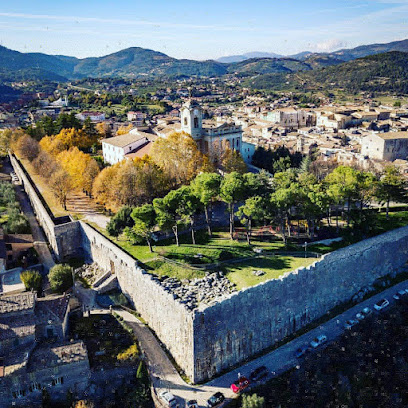
Burger Vi.P.
Experience the perfect blend of gastropub charm and authentic Italian flavors at Burger Vi.P. in Ercolano.
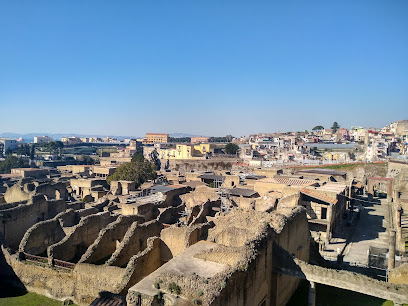
Tours of Pompeii - Guided Tours of Pompeii, Amalfi Coast, Herculaneum, Naples
Discover the ancient city of Pompeii, where history and tragedy intertwine, and immerse yourself in a fascinating guided tour experience.

Herculaneum Parking
Discover the convenience of Herculaneum Parking, your gateway to exploring the ancient ruins of Herculaneum in Ercolano, Italy.
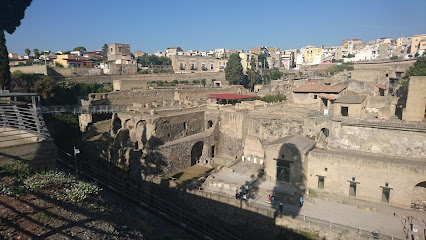
Ercolano Scavi
Explore the ancient wonders of Ercolano Scavi, a UNESCO World Heritage Site revealing the secrets of Roman life preserved by the eruption of Mount Vesuvius.
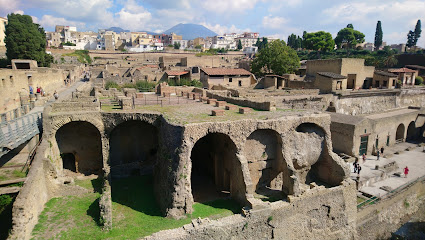
Discover South - Tour Operator Campania
Explore the beauty of Campania with Discover South, your trusted tour operator for unforgettable adventures in the heart of Italy.
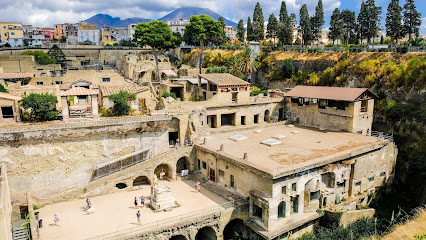
Temple of Venus
Explore the Temple of Venus in ancient Pompeii, a stunning monument steeped in history and beauty, offering breathtaking views and rich cultural insights.
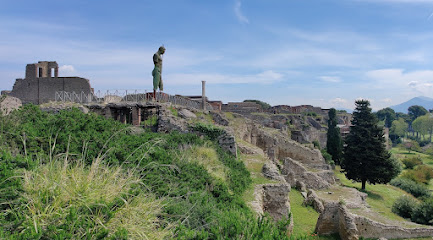
Ruins B&B
Immerse yourself in Italian charm at Ruins B&B, your perfect base for exploring the historic wonders of Ercolano and Herculaneum.

Necropoli di Porta Ercolano
Discover the ancient burial grounds of Necropoli di Porta Ercolano, an archaeological marvel showcasing Roman history and artistry near Pompeii.
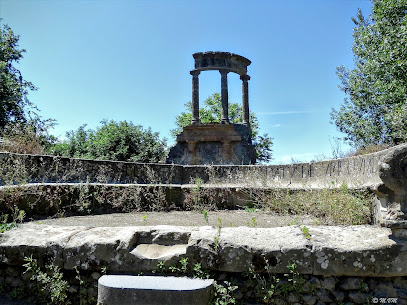
House of Neptune and Amphitrite
Explore the enchanting House of Neptune and Amphitrite, where stunning frescoes and ancient Roman architecture await in beautiful Ercolano.
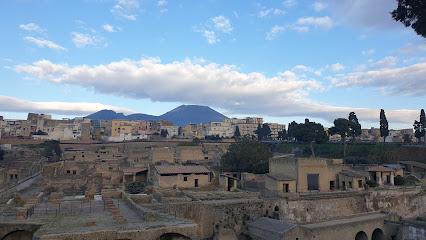
B&B HERCULANEUM RUINS
Experience the charm of B&B Herculaneum Ruins, your gateway to exploring the ancient wonders of Herculaneum and the breathtaking beauty of the Bay of Naples.
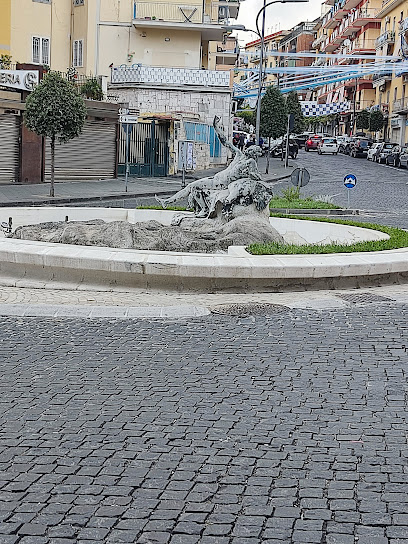
Teatro di Herculaneum
Discover the enchanting Teatro di Herculaneum, a historical landmark that reveals the rich cultural tapestry of ancient Roman theatrical life.

Unmissable attractions to see
Amalfi Coast
Discover the stunning Amalfi Coast: a breathtaking blend of dramatic cliffs, charming villages, and Mediterranean charm that enchants every traveler.
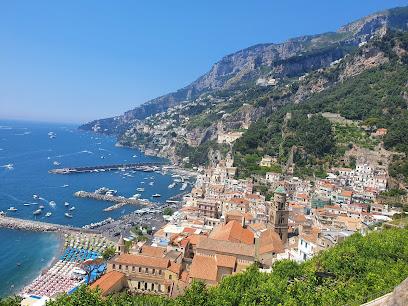
Archaeological Park of Pompeii
Explore the ancient ruins of Pompeii, a UNESCO World Heritage site, and immerse yourself in the echoes of Roman history.
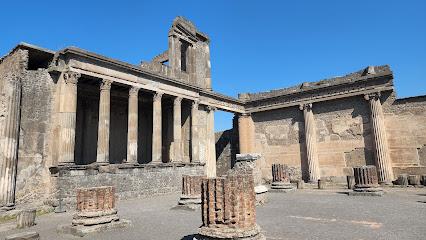
Royal Palace of Caserta
Discover the Royal Palace of Caserta: A UNESCO World Heritage Site filled with Baroque splendor, stunning gardens, and rich history in the heart of Italy.
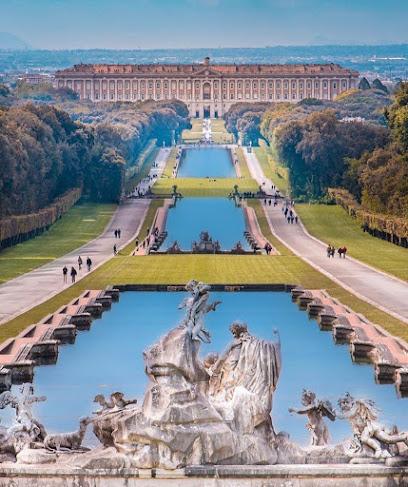
Sansevero Chapel Museum
Discover the captivating beauty of the Sansevero Chapel Museum in Naples, home to exquisite Baroque art and the iconic Veiled Christ sculpture.
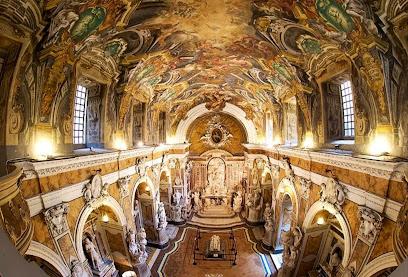
Ovo Castle
Discover the enchanting Ovo Castle in Naples, a historic fortress offering stunning views and rich cultural heritage.
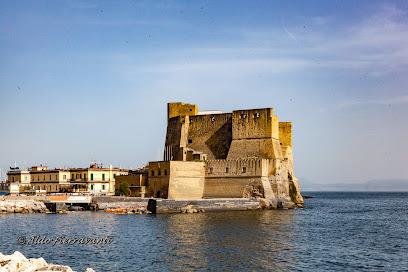
Vesuvius National Park
Explore the stunning Vesuvius National Park, where adventure meets the breathtaking beauty of nature and the rich history of ancient Italy.
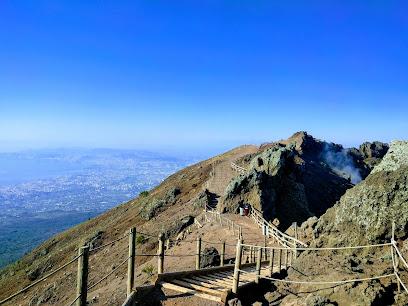
Museo Archeologico Nazionale di Napoli
Explore the rich history of Naples at the Museo Archeologico Nazionale, home to ancient treasures and captivating exhibits from Pompeii and beyond.
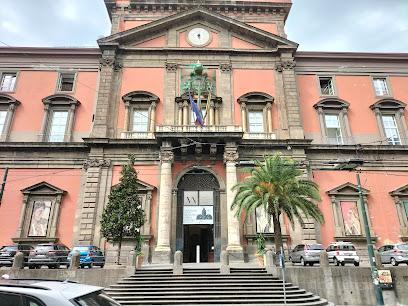
Castel Sant'Elmo
Uncover the history and breathtaking vistas of Castel Sant'Elmo, a must-see fortress in Naples that offers a unique glimpse into the city's rich heritage.
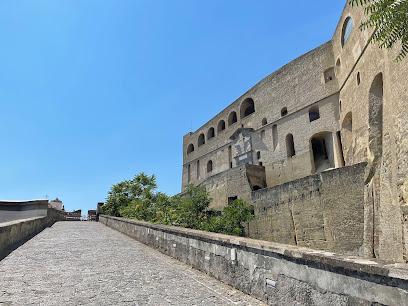
Castel Nuovo
Discover the rich history and breathtaking views at Castel Nuovo, a stunning medieval castle in the heart of Naples, Italy.
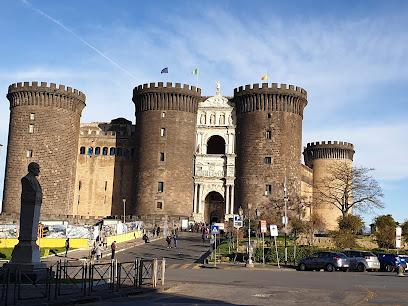
Museo e Real Bosco di Capodimonte
Explore the artistic treasures and serene landscapes of Museo e Real Bosco di Capodimonte, a historical gem in the heart of Naples.
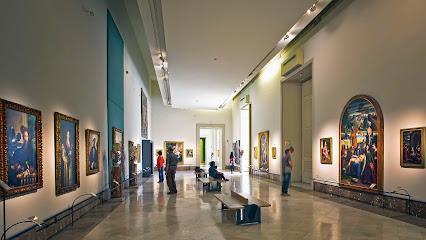
Underground Naples
Uncover the secrets of the city below at Underground Naples, a captivating journey through history, archaeology, and ancient engineering.

Duomo di Napoli
Explore the stunning Duomo di Napoli, a Gothic masterpiece at the heart of Naples, showcasing art, history, and the city's rich cultural heritage.
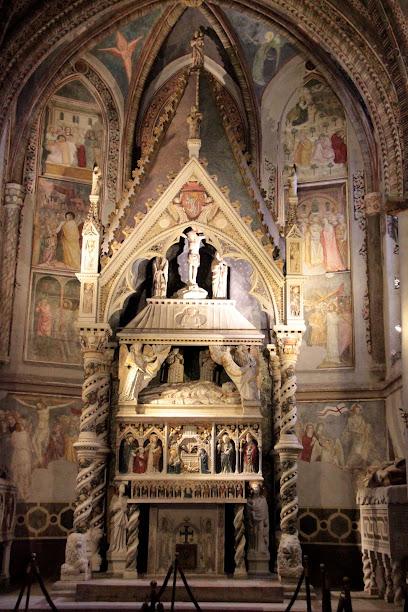
Villa Rufolo
Discover the enchanting beauty and rich history of Villa Rufolo, a must-see landmark in Ravello offering breathtaking views and stunning gardens.
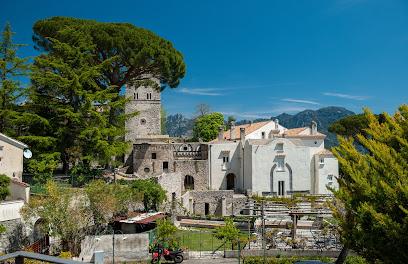
Chiesa del Gesù Nuovo
Explore the stunning Baroque architecture and rich history of Chiesa del Gesù Nuovo, a must-visit church in the heart of Naples.
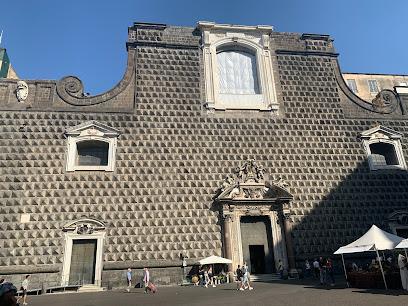
Complesso Monumentale di Santa Chiara
Explore the exquisite Complesso Monumentale di Santa Chiara, a historic monastery in Naples featuring stunning architecture and serene cloisters.
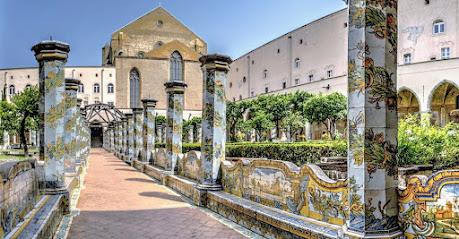
Essential places to dine
Terrazza Due Golfi
Experience authentic Italian cuisine with breathtaking views at Terrazza Due Golfi in Ercolano.

Lumos Pub
Experience the vibrant culinary scene at Lumos Pub in Ercolano - where delicious food meets lively nightlife.
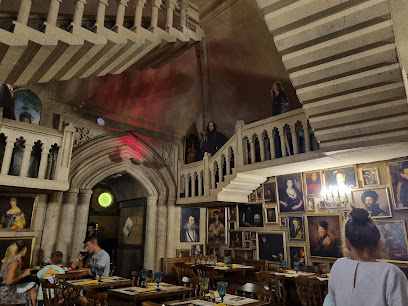
Kona
Discover authentic Italian flavors at Kona in Ercolano - enjoy fresh seafood, wood-fired pizzas, and breathtaking views in an inviting atmosphere.
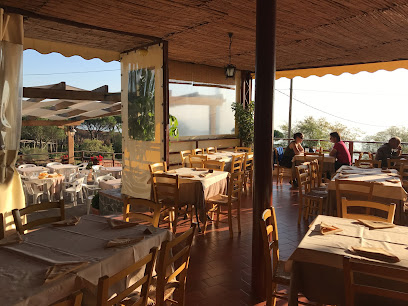
MM Lounge Restaurant
Discover exquisite Mediterranean cuisine at MM Lounge Restaurant - a must-visit seafood destination in Torre del Greco.
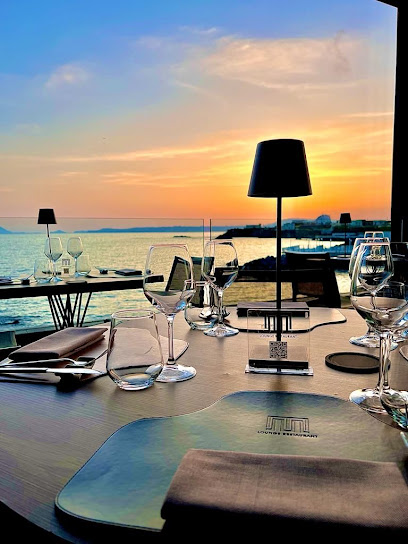
Pizzeria Ro.Vi
Discover authentic Neapolitan pizza at Pizzeria Ro.Vi in Ercolano – where every slice tells a story of tradition and flavor.
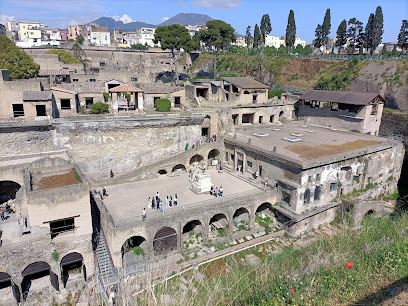
Pizzeria Luna Caprese
Experience authentic Neapolitan pizza at Pizzeria Luna Caprese in Ercolano - where tradition meets flavor in every bite.
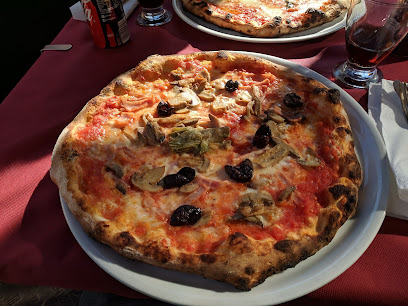
Pappamonte
Experience authentic Italian cuisine at Pappamonte in Ercolano, where every dish tells a story of tradition and flavor.

Ristorante Vesum
Discover authentic Italian flavors at Ristorante Vesum in Ercolano—where traditional cuisine meets warm hospitality.
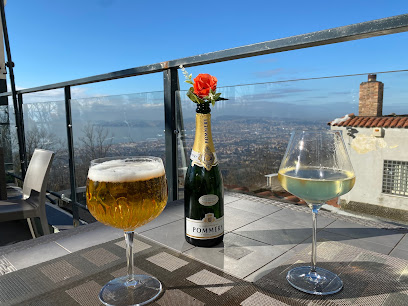
Cratere
Experience culinary excellence at Cratere in Ercolano—where delicious food meets exquisite cocktails in a vibrant setting.
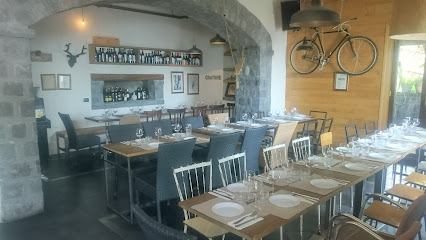
Masseria Guida
Discover Masseria Guida: A perfect blend of dining excellence, cozy accommodations, and rejuvenating spa experiences in Ercolano.
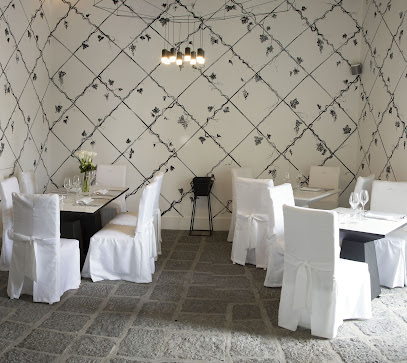
Brancaccio Ristorante e Pizzeria
Experience authentic Italian flavors at Brancaccio Ristorante e Pizzeria in Ercolano – where every bite tells a story.
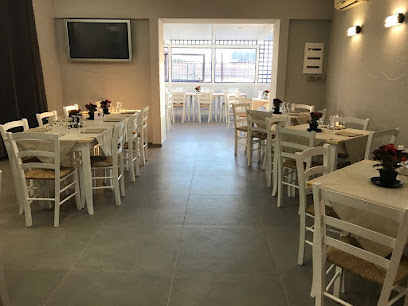
La Roccia Al Vesuvio
Experience authentic Italian flavors with breathtaking views at La Roccia Al Vesuvio, where every meal is a celebration of culinary art.
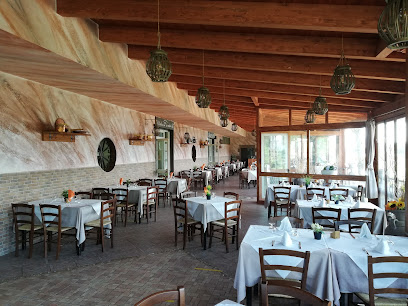
Bistrot Italia
Experience authentic Italian flavors at Bistrot Italia in Ercolano – where every meal is a celebration of tradition and taste.
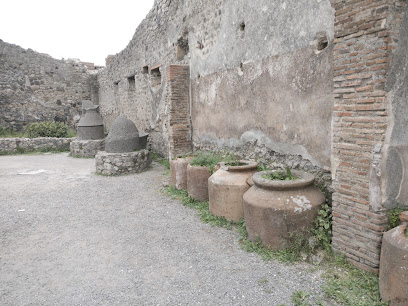
La Fornacella
Experience the heart of Italian cuisine at La Fornacella in Ercolano - where every bite tells a story.

I Giardini di Cesare
Discover authentic Italian flavors at I Giardini di Cesare in Ercolano - where every meal is crafted with passion and served with warmth.
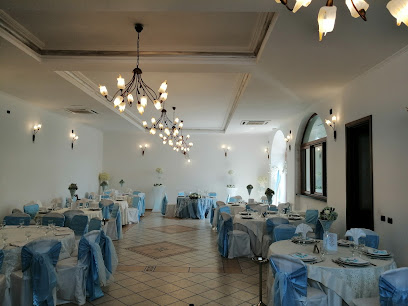
Markets, malls and hidden boutiques
Archaeological Park of Herculaneum
Explore the captivating ruins of Herculaneum, a UNESCO World Heritage site that reveals the daily life of ancient Rome, beautifully preserved by volcanic ash.
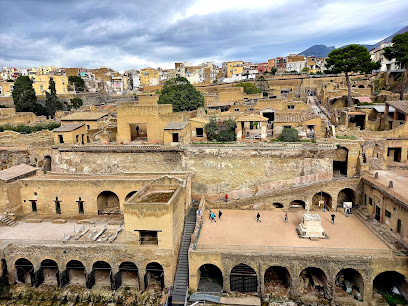
MAV - Virtual Archaeological Museum
Discover the MAV - Virtual Archaeological Museum, where ancient history meets cutting-edge technology in the heart of Ercolano.

Terrazza Vesuvius
Discover Terrazza Vesuvius, a delightful bar and coffee shop in Ercolano, offering stunning views of Mount Vesuvius and a taste of local Italian culture.

Pasticceria Generoso
Savor the finest pastries, cakes, and ice cream at Pasticceria Generoso in Ercolano, where every bite is a taste of Italian tradition.
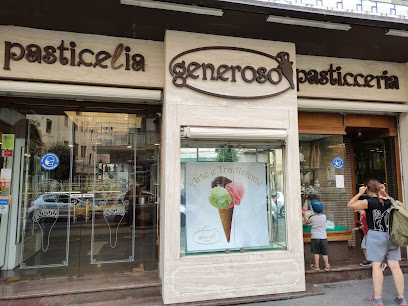
Donadio Corals and Cameos
Explore the exquisite craftsmanship of coral and cameo jewelry at Donadio Corals and Cameos, a unique gem in Portici, Italy.
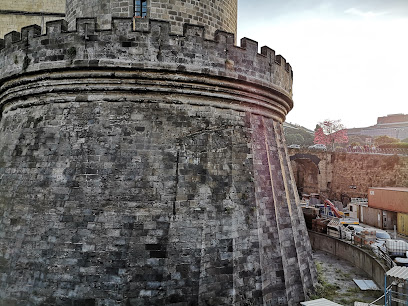
Mercato di Resina
Explore Mercato di Resina: a vibrant market in Ercolano, offering fresh produce, local crafts, and a taste of authentic Italian culture.
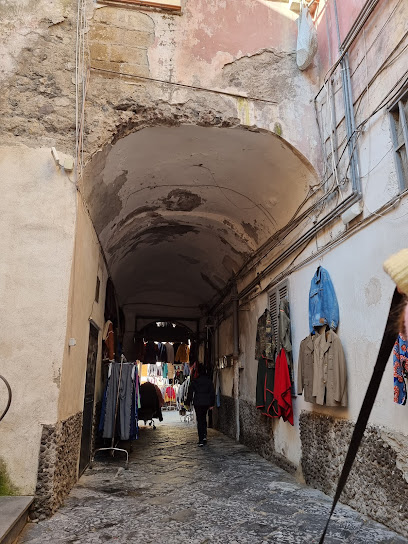
Rosçìr Cafè
Discover the delightful Rosçìr Cafè in Ercolano, where rich coffee and exquisite desserts await in a cozy, inviting atmosphere.
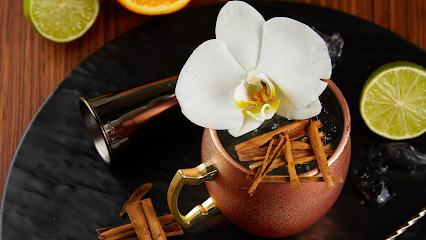
Umami Bakery Bistrot
Discover Umami Bakery Bistrot in Ercolano for an unforgettable culinary experience with gourmet dishes, artisanal sweets, and a cozy atmosphere.

La Capannuccia
Experience authentic Italian flavors and unique souvenirs at La Capannuccia in Trecase, a charming bar and souvenir store in the heart of Italy.
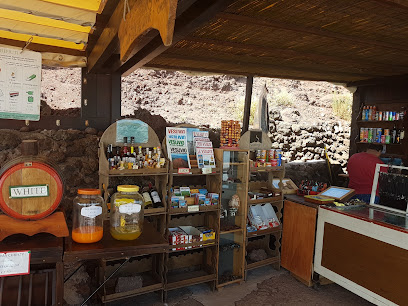
Paninoteca Mato Mato'
Discover the taste of Italy at Paninoteca Mato Mato', where artisan sandwiches meet the vibrant culture of Ercolano.
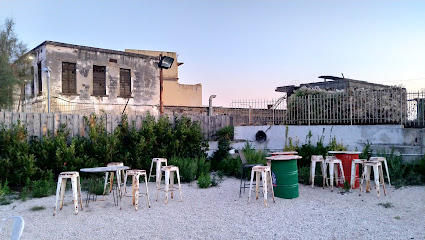
Paninoteca - La Isla Bonita
Discover a culinary gem in Ercolano, Paninoteca - La Isla Bonita, where gourmet sandwiches and Italian flavors come together for an unforgettable dining experience.
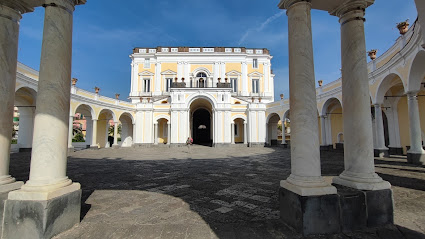
Andris Hotel
Experience comfort and convenience at Andris Hotel in Ercolano, a perfect base for exploring Herculaneum and the beauty of Naples.

Associazione Vesuvio Natura da Esplorare
Discover the stunning landscapes and rich biodiversity at Associazione Vesuvio Natura da Esplorare, where nature meets history on the slopes of Mount Vesuvius.
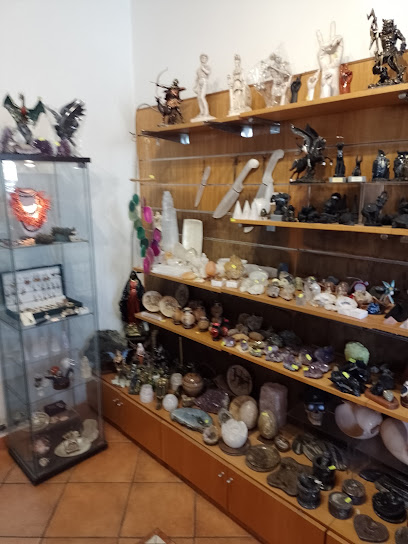
MD S.p.A.
Discover authentic Italian flavors at MD S.p.A. in Ercolano – a vibrant supermarket offering local produce, baked goods, and gourmet specialties.
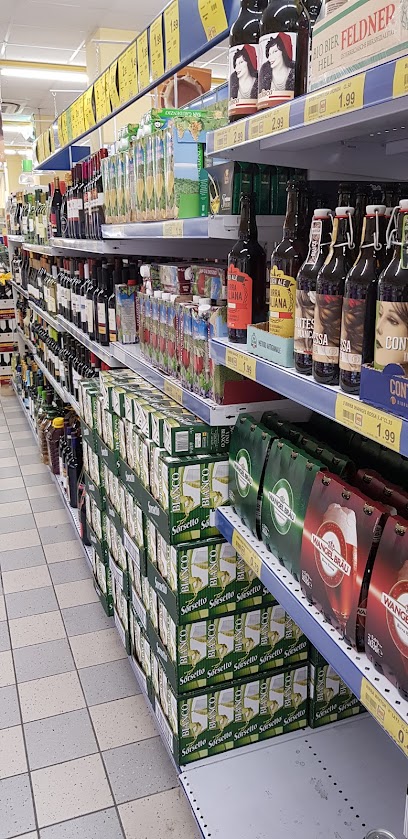
Vesuvius National Park Visitor center
Experience the breathtaking beauty and volcanic history of Vesuvius National Park, a UNESCO World Heritage site in Italy.
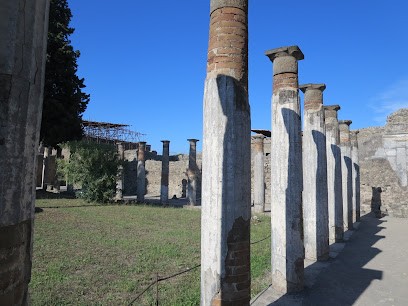
Essential bars & hidden hideouts
Roof Garden Lounge Bar
Experience the enchanting ambiance of Roof Garden Lounge Bar in Ercolano, where exquisite coffee meets captivating live music in a stunning rooftop setting.
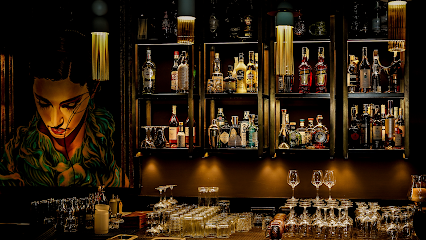
Lumos Pub
Experience the vibrant atmosphere and local flavors at Lumos Pub in Ercolano, a perfect retreat for travelers seeking relaxation and culinary delights.
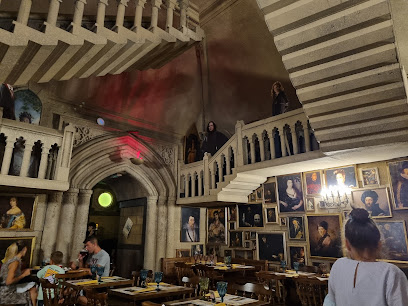
Terrazza Vesuvius
Discover Terrazza Vesuvius, a charming bar and coffee shop in Ercolano offering stunning views, delicious drinks, and a cozy atmosphere for travelers.

Pappamonte
Discover the authentic taste of Italy at Pappamonte, a charming restaurant in Ercolano serving exquisite local dishes and fine wines.
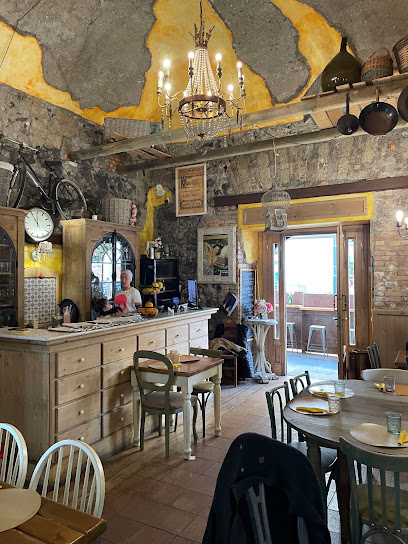
Cratere
Discover Cratere, a vibrant cocktail bar in Ercolano, offering creative drinks and a lively atmosphere just steps from historical attractions.
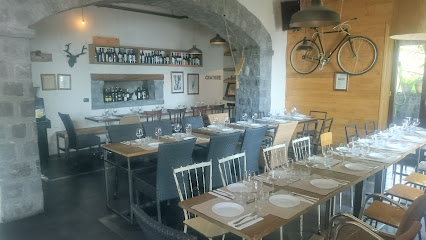
Bistrot Italia
Experience authentic Italian cuisine in a cozy atmosphere at Bistrot Italia, a must-visit destination in Ercolano.
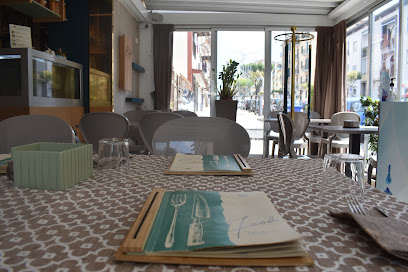
Viva Lo Re
Experience the charm of Italian wine culture at Viva Lo Re, a cozy wine bar in Ercolano, offering exquisite wines and delightful bites.
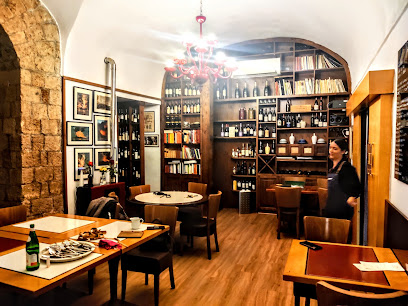
The Shire Pub
Discover the charm of Ireland in Ercolano at The Shire Pub, where hearty meals and a warm atmosphere await every visitor.
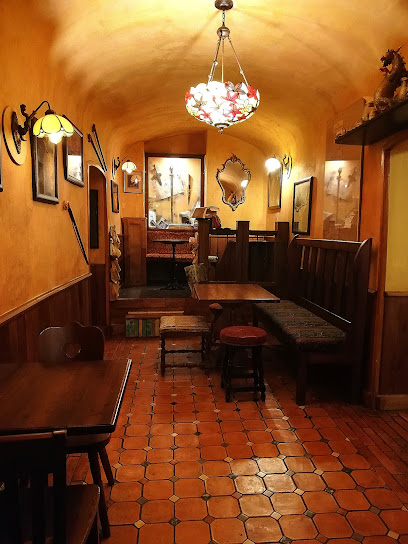
Tubba Catubba
Discover Tubba Catubba, Ercolano's gem for authentic Italian and seafood delicacies, where every meal is a culinary celebration.
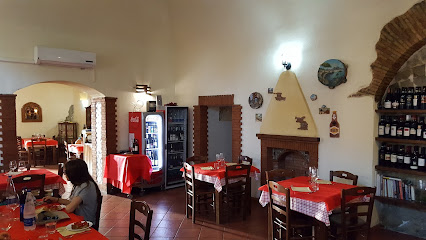
Civico 33
Experience the vibrant atmosphere of Civico 33, a beloved bar in Ercolano, perfect for enjoying drinks, coffee, and local flavors.
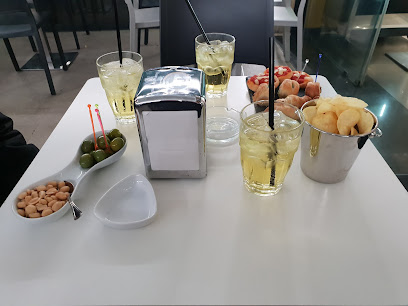
Burger Vi.P.
Experience the best of Italian dining at Burger Vi.P., a premier gastropub in Ercolano known for its delicious burgers and welcoming atmosphere.
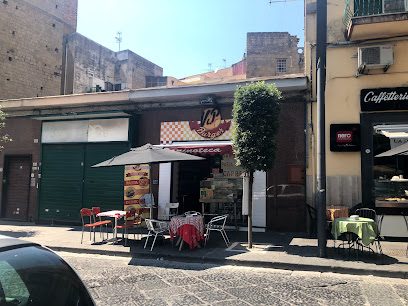
Rosçìr Cafè
Experience the essence of Italian café culture at Rosçìr Cafè in Ercolano, where delightful flavors and a warm atmosphere await.
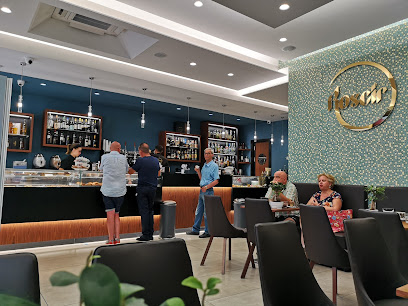
IQOS PREMIUM PARTNER ERCOLANO - Caffè Don Peppe
Discover the flavors of Italy at Caffè Don Peppe, a beloved bar tabac in Ercolano, perfect for coffee lovers and culture seekers alike.
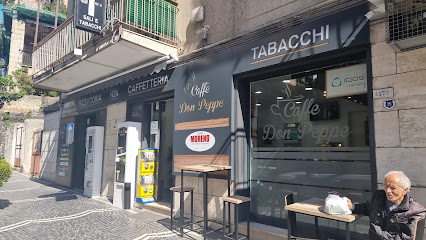
Bar Sandwich Herculaneum Cafè
Discover the flavors of Ercolano at Bar Sandwich Herculaneum Cafè, where delicious sandwiches and a cozy atmosphere await.
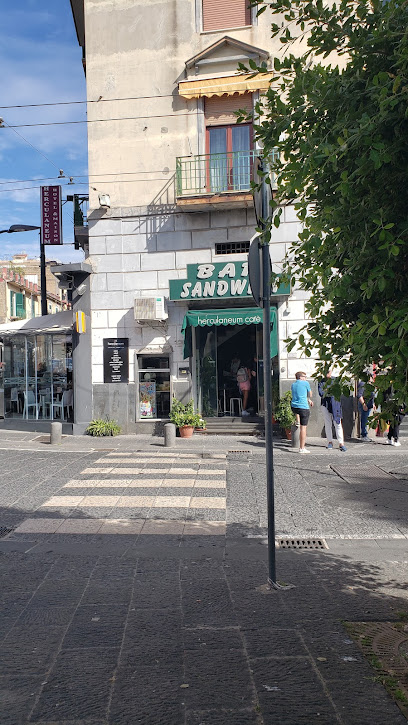
Bar Nunzia
Discover the heart of Ercolano at Bar Nunzia, where authentic Italian flavors and warm hospitality come together in a charming atmosphere.
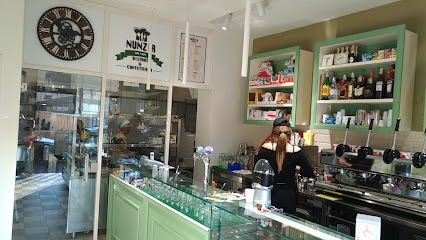
Travel experiences inspired by this city
Explore more travel diariesLocal Phrases
-
- HelloCiao
[chow] - GoodbyeArrivederci
[ah-ree-veh-DEHR-chee] - YesSì
[see] - NoNo
[noh] - Please/You're welcomePer favore/Prego
[pair fah-VOH-reh/PRAY-goh] - Thank youGrazie
[GRAH-tsyeh] - Excuse me/SorryMi scusi/Scusa
[mee SKOO-zee / SKOO-zah] - How are you?Come stai?
[koh-meh STAH-ee] - Fine. And you?Bene. E tu?
[BEH-neh. eh too] - Do you speak English?Parli inglese?
[PAHR-lee een-GLEH-zeh] - I don't understandNon capisco
[non kah-PEES-koh]
- HelloCiao
-
- I'd like to see the menu, pleaseVorrei vedere il menu, per favore
[vohr-RAY veh-DEH-reh eel MEH-noo, pair fah-VOH-reh] - I don't eat meatNon mangio carne
[non MAHN-joh KAHR-neh] - Cheers!Salute!
[sah-LOO-teh] - I would like to pay, pleaseVorrei pagare, per favore
[vohr-RAY pah-GAH-reh, pair fah-VOH-reh]
- I'd like to see the menu, pleaseVorrei vedere il menu, per favore
-
- Help!Aiuto!
[ah-YOO-toh] - Go away!Vai via!
[vy VEE-ah] - Call the Police!Chiamate la polizia!
[kyah-MAH-teh lah poh-LEE-tsyah] - Call a doctor!Chiamate un dottore!
[kyah-MAH-teh oon doht-TOH-reh] - I'm lostMi sono perso
[mee SOH-noh PEHR-soh] - I'm illSto male
[stoh MAH-leh]
- Help!Aiuto!
-
- I'd like to buy...Vorrei comprare...
[vohr-RAY kohm-PRAH-reh] - I'm just lookingSto solo guardando
[stoh SOH-loh gwahr-DAHN-doh] - How much is it?Quanto costa?
[KWAN-toh KOH-stah] - That's too expensiveÈ troppo caro
[eh TROH-poh KAH-roh] - Can you lower the price?Può abbassare il prezzo?
[pwah ahb-bah-SAH-reh eel PREHT-soh]
- I'd like to buy...Vorrei comprare...
-
- What time is it?Che ora è?
[keh OH-rah eh] - It's one o'clockÈ l'una
[eh LOO-nah] - Half past (10)Sono le dieci e mezza
[SOH-noh leh dee-EH-chee eh MEHT-sah] - MorningMattina
[mah-TEEN-ah] - AfternoonPomeriggio
[poh-meh-REE-joh] - EveningSera
[SEH-rah] - YesterdayIeri
[YEH-ree] - TodayOggi
[OH-jee] - TomorrowDomani
[doh-MAH-nee] - 1Uno
[OO-noh] - 2Due
[DWEH] - 3Tre
[TREH] - 4Quattro
[KWAHT-troh] - 5Cinque
[CHEEN-kweh] - 6Sei
[SAY] - 7Sette
[SEH-teh] - 8Otto
[OH-toh] - 9Nove
[NOH-veh] - 10Dieci
[DYEH-chee]
- What time is it?Che ora è?
-
- Where's a/the...?Dov'è un/il...
[doh-VEH oon/eel] - What's the address?Qual è l'indirizzo?
[kwal eh leen-dee-REET-soh] - Can you show me (on the map)?Puoi mostrarmi (sulla mappa)?
[PWAW-ee mohs-TRAHR-mee (SOOL-lah MAHP-pah)] - When's the next (bus)?Quando è il prossimo (autobus)?
[KWAN-doh eh eel PROHS-soh pross-SEE-moh (OW-toh-BOOS)] - A ticket (to ....)Un biglietto (per ....)
[oon bee-LYEH-toh (pair)]
- Where's a/the...?Dov'è un/il...
History of Herculaneum
-
Herculaneum, believed to have been founded by the Oscans in the 6th century BC, was named after the Greek hero Hercules. The town gained significance under the Samnites and later became a Roman municipium after the Social War in 89 BC.
-
During the Roman period, Herculaneum prospered as a wealthy residential town. Its strategic location on the Bay of Naples made it a favorite resort for Rome's elite. Luxurious villas, bathhouses, and public buildings adorned the town, reflecting its affluence and high social status.
-
On August 24, 79 AD, Mount Vesuvius erupted catastrophically, burying Herculaneum under approximately 20 meters of volcanic material. Unlike Pompeii, which was covered in ash, Herculaneum was engulfed by pyroclastic flows, which preserved wooden structures, organic materials, and even food by carbonization.
-
Herculaneum lay hidden for nearly 1,700 years until its accidental rediscovery in 1709 by a well-digger named Rocque Joaquin de Alcubierre. Excavations, initially carried out through tunnels, unearthed stunning frescoes, mosaics, and artifacts, sparking a renewed interest in Roman art and culture.
-
Systematic excavations began in the 20th century, revealing more of Herculaneum's urban landscape and daily life. Today, efforts are focused on preserving the site from environmental and human damage while continuing to uncover its hidden treasures. The Herculaneum Conservation Project, launched in 2001, has played a pivotal role in these endeavors.
-
Herculaneum's residents enjoyed a high standard of living, evident in the well-preserved homes, shops, and public baths. The city's infrastructure included advanced water systems, public latrines, and an impressive sewer network, showcasing Roman engineering prowess. Frescoes and mosaics provide insights into the daily activities, religious practices, and social interactions of its inhabitants.
Herculaneum Essentials
-
Herculaneum is located in the Campania region of Italy, near the Bay of Naples. The closest major airport is Naples International Airport (Aeroporto di Napoli-Capodichino), approximately 15 kilometers away. From Naples, you can take the Circumvesuviana train line towards Sorrento and get off at the Ercolano Scavi station, which is a short walk from the archaeological site. Alternatively, you can hire a taxi or use ride-sharing services for a more direct route.
-
Public transportation in Herculaneum is well-connected and convenient. The Circumvesuviana train line is the most efficient way to travel to and from Naples and other nearby towns. Local buses also operate within the town and can take you to various attractions. Taxis and ride-sharing services are readily available for more personalized travel. Renting a car is another option, but be mindful of limited parking spaces and narrow streets in the historical areas.
-
The official currency in Italy is the Euro (EUR). Major credit and debit cards are widely accepted in hotels, restaurants, and shops. However, it is advisable to carry some cash for smaller establishments and market purchases. ATMs are available throughout Herculaneum, but it's prudent to withdraw sufficient cash in Naples or at the airport to avoid any inconvenience.
-
Herculaneum is generally a safe destination for tourists. However, as with any travel destination, it is advisable to take standard precautions. Avoid walking alone at night in unfamiliar areas and keep an eye on your belongings in crowded places. Be cautious of pickpockets, especially around tourist areas and public transportation hubs. There are no specific high-crime areas targeting tourists, but staying vigilant is always recommended.
-
In case of emergency, dial 112 for immediate assistance. This number connects you to emergency services including police, medical, and fire departments. Local police stations and medical facilities are available in Herculaneum. It is highly recommended to have travel insurance that covers medical emergencies. For minor health issues, there are pharmacies in the town where you can purchase over-the-counter medications.
-
Fashion: Do dress modestly, especially when visiting religious sites, and wear comfortable shoes suitable for walking on uneven surfaces. Avoid wearing overly casual or revealing clothing. Religion: Do respect local customs and traditions, especially in churches and other religious sites. Public Transport: Do validate your ticket before boarding trains and buses. Don’t eat or drink on public transport. Greetings: Do greet people with a friendly 'Buongiorno' (Good morning) or 'Buonasera' (Good evening). A handshake is common. Eating & Drinking: Do try local delicacies and accept food offerings graciously. Don’t rush your meals; Italians appreciate leisurely dining.
-
To experience Herculaneum like a local, visit the local markets where you can buy fresh produce and traditional Italian goods. Engage with locals, as they are often friendly and willing to share stories about the town's history and culture. Don't miss exploring the lesser-known parts of the archaeological site for a more intimate experience. For a unique local experience, visit Herculaneum's seaside promenade and enjoy the views of the Bay of Naples. Also, consider taking a guided tour to gain deeper insights into the rich history and significance of the area.
Trending Landmark in Herculaneum
-
Archaeological Park of Herculaneum
-
Herculaneum Hotel & Maison
-
MAV - Virtual Archaeological Museum
-
Basilica di Santa Croce
-
Burger Vi.P.
-
Tours of Pompeii - Guided Tours of Pompeii, Amalfi Coast, Herculaneum, Naples
-
Herculaneum Parking
-
Ercolano Scavi
-
Discover South - Tour Operator Campania
-
Temple of Venus
-
Ruins B&B
-
Necropoli di Porta Ercolano
-
House of Neptune and Amphitrite
-
B&B HERCULANEUM RUINS
-
Teatro di Herculaneum
Nearby Cities to Herculaneum
-
Things To Do in Naples
-
Things To Do in Pompeii
-
Things To Do in Sorrento
-
Things To Do in Positano
-
Things To Do in Ravello
-
Things To Do in Amalfi
-
Things To Do in Capri
-
Things To Do in Matera
-
Things To Do in Rome
-
Things To Do in St. Peter's Square
-
Things To Do in Apostolic Palace
-
Things To Do in Vatican Necropolis
-
Things To Do in St. Peter's Basilica
-
Things To Do in Sistine Chapel
-
Things To Do in Gregorian Etruscan Museum












